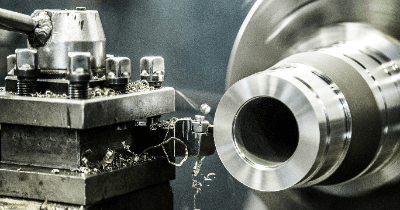What Is a Stud Remover?
A stud remover is a specialized tool for loosening and removing stud bolts (all-threaded or inch-cut bolts) that have already been screwed in. The terms “stud bolt setter” and “stud puller” are also commonly used.
Stud bolts cannot be loosened by turning them with general-purpose tools because they do not have a part into which a tool can be inserted, like a hexagonal bolt. In addition, it can be tightened and secured with a double nut (two nuts screwed onto the stud bolt) and turned with a double nut wrench.
However, since this requires time and effort to set and remove the double nut, a stud remover can be used as a dedicated tool to efficiently and easily remove the stud bolt.
Uses of Stud Removers
Stud removers have few other uses, as they are basically dedicated tools for screwing in and removing stud bolts.
The stud removers are attached to a wrench in the same way as a box socket for a hex bolt or nut.
Attach the stud remover that matches the size of the stud bolt to the wrench and insert it into the stud bolt. Turn the stud remover slightly counterclockwise to secure it to the stud bolt. Then turn the wrench counterclockwise (loosening direction) to loosen and remove the stud bolt.
The stud removers can be used to remove the stud bolt without damaging the threads.
How to Select Stud Removers
The following points should be considered when selecting stud removers:
Size of the Insertion Angle
The insertion angle is the size of the square hole where the socket is inserted into the wrench handle, and there are three different sizes. It is the same as for socket wrenches and comes in three sizes: 1/2″ (12.7mm), 3/8″ (9.5mm), and 1/4″ (6.35mm). Select a remover that matches the insert angle size of the wrench handle.
Thread Size
The outer diameter of the stud bolt threads is from 5.0mm to 19.0mm, and the remover should be selected accordingly.
Types of Stud Removers
There are two main types of stud removers.
- The socket type, in which a built-in roller eccentrically attached to the socket grips the stud bolt. This type has a specific size of bolt it can handle.
- The eccentric roller with a serrated outer circumference grips the stud bolt by biting into the stud bolt. This type is compatible with multiple sizes and is highly versatile. However, the contact between the roller and the stud bolt is a single point, making it slightly more slippery than the socket type. This type is the same as the socket type and is used by attaching it to a wrench.
- The through-hole type is effective when the stud bolt is long and can work by gripping the root of the stud bolt, making it easier to work with than the socket type, which turns the stud bolt at the tip.
 A Lathe is a type of machine tool for metalworking. It is a machine that fixes the material to be processed on a rotating base called a
A Lathe is a type of machine tool for metalworking. It is a machine that fixes the material to be processed on a rotating base called a